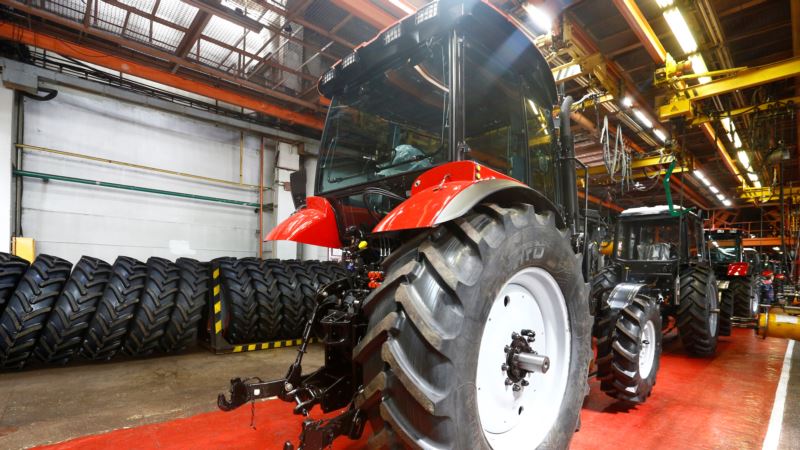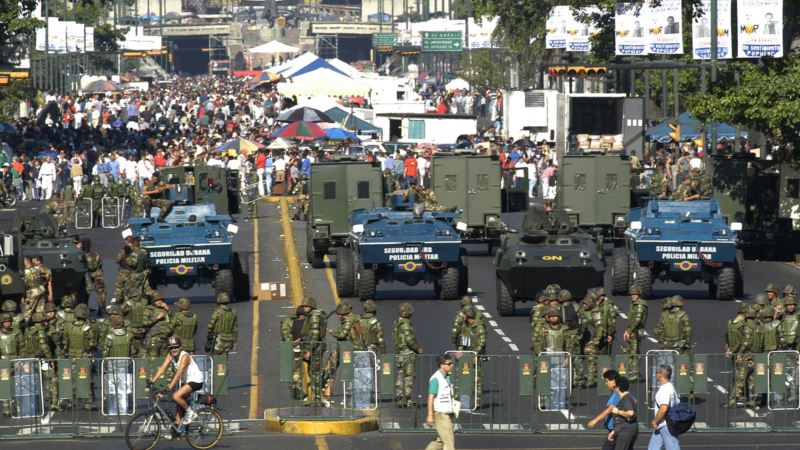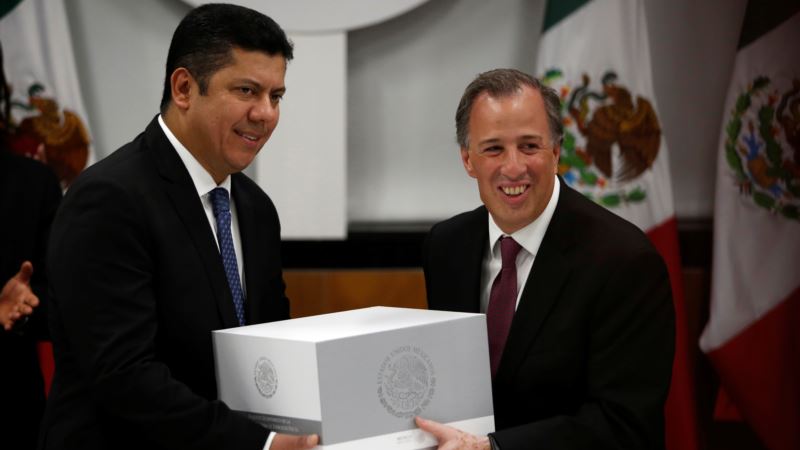Throughout the former Soviet Union, Belarus was famous for making tractors at the state-run Minsk Tractor Works, which this year celebrated its 70th anniversary. The Minsk Tractor Works was established in 1946 and, with state help, survived the collapse of the USSR 25 years ago this month. “It is one of the largest manufacturers of the few left in the post-Soviet territory, as far as its capacity is concerned,” says Deputy Director General Andrei Suslenkov. “So one could be straightforward in saying that its contribution [to the economy] is huge.” In Soviet times, they made only a few models of tractors but now have over 200. A recent multimillion-dollar upgrade employs German and Italian technology. WATCH: Daniel Schearf's video report “The technical facilities as well as technique of the Soviet times did not make it possible to produce technical parts of the quality level we could achieve under the present techniques on these facilities,” says senior foreman Valery Khonsky, who has worked at the factory since 1975. Need for reforms But critics say the state-run model is failing as Belarus struggles with global competition, inflation, and a shrinking economy. “In 2016, it has failed to deliver on reforms, so it believes that somehow it will overcome difficulties,” says Jaroslav Romanchuk, a political economist at the Scientific Research Miss Center . “But as we see from numbers, from the way manufacturers work, the situation, the job market, things are getting worse.” The workforce at the Minsk Tractor Works shrank from the original 30,000 during Soviet times, but it remains a major employer in Belarus. A museum recently opened at the factory traces its Soviet history and work ideology with slogans and a picture of communist revolutionary leader Vladimir Lenin on the wall. “There are 18,000 people currently working at Minsk Tractor Works,” says Aminya Baitasova, curator of the factory’s newly-opened museum. “Should the factory have been closed, can you imagine how many people would have remained unemployed? How could anyone deal with this amount of people? The people would begin worrying. There might be some rallies, or war.” Switching to high-tech At a high-tech industrial park in Minsk, a small army of young and modern Belarusians prepare tanks, battleships, and warplanes — all of them virtual. While a big part of Belarus’ economy is tied to the past, a growing part is battling its way into the global market of high technology and innovation with software like the World of Tanks franchise, produced by the Belarusian-Cypriot company Wargaming. The online gaming giant got its start in Minsk and has attracted fans around the world with more than 110 million registered users. “A High-Tech Park provides extra possibilities for the development of IT companies here, on the territory of the Belarus Republic, like tax advantages, as well as many advantages for employees engaged in this field and a favorable climate for business development,” says Anastasiya Zaytseva, PR Manager for Wargaming.Net’s Game Stream. While headquartered in Cyprus, about half of Wargaming's employees, some 2,000 programmers and support staff, are in Minsk. They look to the future, while acknowledging the Soviet past that inspired their virtual war games. The lobby of Wargaming's Minsk office has a real Soviet-era tank and a reception desk that looks like a warship, while the office hallways feature mock Soviet posters of World War II propaganda. One shows three troops in uniforms of the era, smiling with arms around each other's shoulders, and wrapped in the orange and black ribbon of Saint George — a Russian symbol of military victory. The World of Tanks logo lies on the ribbon like a belt buckle and a line in Russian below it reads, “Glory to Online Gamers!”
Belarus’ Post-Soviet Economy: Tractors to World of Tanks






